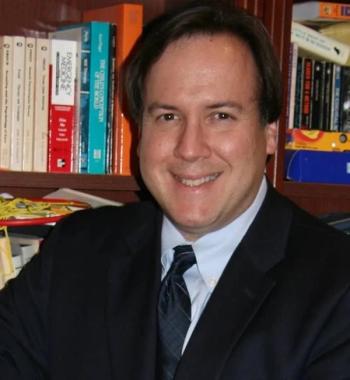
Physician Aid-in-Dying and the Proper Role of Physicians
According to the authors, physician aid in dying for persons with severe mental illness is gaining acceptance. More In this point/counterpoint.
POINT/COUNTERPOINT
Editor's note: This COUNTERPOINT is in response to Ronald W. Pies, MD; Annette L. Hanson, MD; Mark S. Komrad, MD; and Cynthia M. A. Geppert, MD, MPH, in their article,
In our recent
On the other hand, we also argued that allowing PAD for some patients with severe, irremediable psychiatric illness would be antithetical to psychiatry’s morally justified mission of preventing suicide. This is not merely because both actions might be classified as suicide. Rather, it is because IPCSP itself invokes judgments about how severe and irremediable a person’s suffering must be in order to justify her choosing to die. When we prevent suicide, at least in cases where a patient’s decision-making capacity is otherwise intact, we are often saying that the suicidal person’s suffering is either not so severe or not so irremediable as to justify choosing to die.
We thought it important to characterize this dilemma because PAD (and euthanasia) laws have already expanded to encompass persons with non-terminal psychiatric conditions in several European countries, because PAD laws in the US are gaining a greater foothold, and because one of us (BMK) has had several patients who were struggling with severe psychiatric illness ask why PAD should not be available to them.
In their response to our article,
We suspect that our disagreement over the morality of PAD in terminal illness is irresolvable, given the intensity of their opposition and our own conviction that it is sometimes permissible. Still, it is worth pointing out a few concerns about their view. First, although Dr Pies and colleagues like to depict support for PAD as a fringe view, it is anything but: the organization Compassion and Choices
Admittedly, if one granted that physicians are only healers, and that helping someone end her life is antithetical to healing, then it would follow that physicians should not help patients to end their lives. But this is not the right way to think about what physicians are supposed to do. First, all patients-indeed, all people-eventually die, and to assume that physicians should play no role in how that death goes, if they can no longer heal, is to ignore one of medicine’s most important obligations in easing the dying process.
But PAD? Here, the physician is better positioned than any other party to determine when an illness is terminal, to assess how much someone could be suffering given that illness, and whether that suffering is likely to subside on its own or whether there are means available for relieving it. Second, physicians currently constitute the main group that is empowered to prescribe the medications that promise the peaceful death that persons who want PAD seek. Third, we reject the historicism and essentialism about professional virtue, and the interpretation of “Hippocratic medicine” that are at the core of Dr Pies and colleagues’ view.
We think that what is permissible for physicians is determined both by evolving social expectations (since the rights and prerogatives held by physicians are granted to them by society), and by general moral principles. Neither of these is established by appeals to history. The original Hippocratic Oath limited training in medicine to males and prohibited not only giving a deadly drug even if asked for it, but also surgery, abortion, and taking fees for teaching medicine. Multiple revised versions of the Oath have been developed to try to align it with contemporary medical and social values.
Dr Pies and colleagues at times seem to misread us. For instance, they suggest that we elide the distinction between laws allowing PAD and morality. We are quite aware that the law does not always reflect moral truths but think it often aims to do so, and feel confident that efforts to legalize PAD in many states reflect the increasingly common view that it is morally permissible. Our position was thus that, because of building momentum in law and culture, we should take seriously the view that PAD for terminal illness is morally permissible, and therefore consider the implications this would have for persons with severe mental illness.
Dr Pies and coauthors2 imply that we accept the claims that “all [mental or physical] suffering, even for a day or a week, [could be an] adequate reason for self-killing,” and “that suffering that can be substantially relieved with appropriate treatment” could be an adequate reason for self-killing. But neither represents our view: we took great pains in our article to stipulate that it is severe and irremediable suffering that may justify PAD and argued that determining how severe and how irremediable such suffering must be is a hard moral problem. That was, though Pies and colleagues have overlooked it, the dilemma we intended to illustrate.
There is an important point about the role of autonomy in justifications for PAD that they also miss. They assert that the primary motivation for allowing PAD is respect for autonomy and that those who think that PAD is permissible are committed “to the claim that the patient’s self-determination takes precedence over all other moral goods.”2 As we pointed out in our original paper, however, appeal to patient self-determination alone is insufficient to justify PAD, since we often restrict autonomy on the grounds that a person’s reasons for acting are outweighed by other moral goods.1 Indeed, IPCSP is precisely such a case. This serves again to illuminate the dilemma we identified: to the extent that we think PAD for terminal illness is morally permissible, it implies that some amount of suffering with some degree of irremediableness could justify a patient’s seeking help in ending his own life; but IPCSP implies that the same degrees of suffering and irremediableness are insufficient to do so.
Dr Kious is Assistant Professor of Psychiatry, Adjunct Professor of Internal Medicine, Program in Medical Ethics and Humanities, and Adjunct Professor of Philosophy, at the University of Utah. Dr Battin is Distinguished Professor of Philosophy and Adjunct Professor of Internal Medicine, Program in Medical Ethics and Humanities, at the University of Utah.
Disclosures:
The authors report no conflicts of interest concerning the subject matter of this article.
References:
1. Kious B, Battin M.
2. Pies RW, Hansen AL, Komrad MS, Geppert CMA. PAS versus involuntary commitment: is there a moral dilemma? Psychiatric Times. October 29, 2019.
3. Pies RW. Assisting suicide is not assisting nature. PsychCentral Pro.
4. Pies RW. When is self-killing not suicide? Psychiatric News. July 19, 2018.
5. Pies RW, Hanson A. Twelve Myths About Physician Assisted Suicide and Medical Aid In Dying. MD Magazine. July 7, 2018.
6. Komrad MS. APA Position on Medical Euthanasia. Psychiatric Times. 2017;34(2):20-25.
7. Hanson A, Pies R, Komrad M.
8. Polling on Medical Aid in Dying. Compassion and Choices. 2019.
9. Physician-assisted suicide. In: American Medical Association. AMA Principles of Medical Ethics. 2016.
Newsletter
Receive trusted psychiatric news, expert analysis, and clinical insights — subscribe today to support your practice and your patients.














